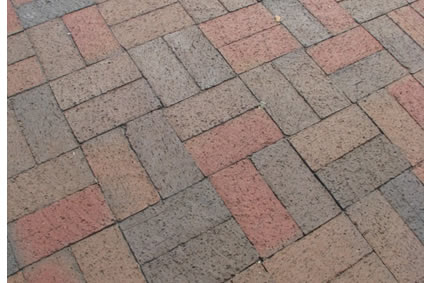Edging is imperative for keeping all of your pavers tightly interlocked. If edging is not taken care of, the pavers may spread apart from each other owing to the force exerted by people and vehicles.
To keep all of your pavers tightly packed together, you need to install edging around the full perimeter of your pavers, except where your pavers come in contact with a solid obstruction like a wall or a concrete curb.

Paver System
The pavers that you see on your driveway, walkway, or patio are just one visible component of a system that extends deeper underground. The system that holds your pavers together comprises of joint sand, bedding sand, and the stone base. While this system provides support from bottom, you also need support around the paver periphery to keep them packed tightly. The edge restraint serves this key purpose.
Problems with Defective Edging
If your edge restraint goes missing or gets damaged, all sorts of problems can arise with your pavers. Several defects transpire when the edging is missing. The pavers will move relative to one another and the pattern in which they were set will be ruined. The joints will also open up and get damaged.
Without edging to pack the pavers tightly, the pavers may shift apart and may even sink or lift. The pavers may not be level and people in the area may trip and stumble over the pavers that stick out. Since the gaps between the pavers will increase as they shift apart from each other, this will provide room for moss, weed, and grass to thrive.
The damage to the edge restraints often begins at a small section. If taken care of early, the problem can be resolved with relatively less effort and lower cost. However, if the issue is not taken care of from the outset, then the damage may become more extensive with the passage of time. As the damage grows and affects a larger section of your pavers, repair work will become more expensive and arduous.
Installation Problems
Edging defects are often the result of incorrect installation. One common installation problem that leads to such problems occurs when the stone base does not extend the minimum required distance beyond the paver perimeter. Also, when the edge restraint is not properly held in place, then it can become weak and fail to achieve its purpose.
Another installation problem transpires when there are not enough spikes in place to secure the edge restraints.
Harsh winters are also another common source of edging problems since the freeze-thaw cycle can eventually weaken the edge restraint.
Edging can be made from different materials like concrete, wood, steel, aluminum, and plastic. Plastic has an advantage that it does not rot or rust with time. It is also easier to install.
What Should You Do When Paver Edging Is Damaged?
To prevent such problems from happening in the first place, you should get the job done by proficient and experienced professionals.
